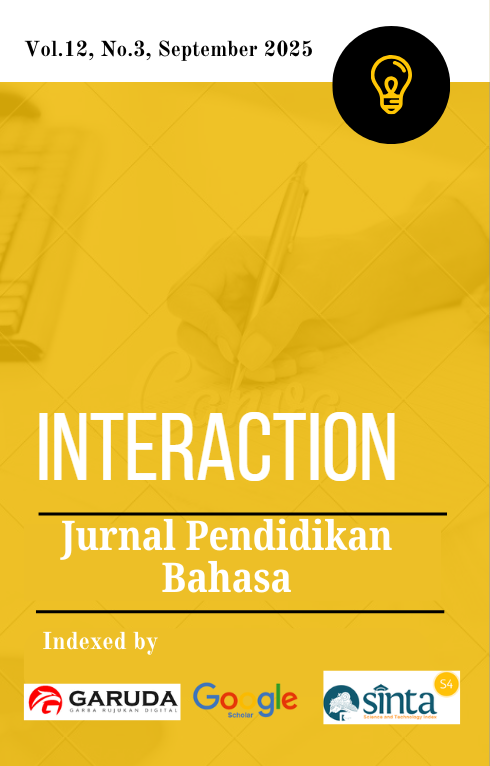Teacher Strategies for Enhancing Senior High School Students’ Motivation in English Learning: A Case Study at SMAN 1 Barru
DOI:
https://doi.org/10.36232/interactionjournal.v12i3.4073Keywords:
Motivation, EFL, Active Learning, Reward SystemsAbstract
This study examines the strategies employed by teachers to enhance the motivation of senior high school students in learning English at SMAN 1 Barru, Indonesia. Student motivation is a crucial factor influencing learning outcomes; yet, many learners struggle with low engagement, limited confidence, and anxiety when using English. Addressing this issue is essential for enhancing language proficiency and supporting national education objectives. A qualitative descriptive design was adopted, with data collected through semi-structured interviews involving six tenth-grade students. The interviews were analysed using Miles and Huberman's (2014) framework to identify recurring themes and patterns. The results revealed that two primary strategies — Active Learning and Reward Systems — significantly boosted student motivation. Active learning, through techniques such as group discussions, gamified quizzes, and brainstorming, created opportunities for collaboration, participation, and self-expression. Reward Systems, including praise, certificates, and bonus points, provided reinforcement that encouraged effort and perseverance. Together, these strategies not only increased enthusiasm but also reduced learning anxiety, making English learning more enjoyable and meaningful. The novelty of this study lies in highlighting how the combination of intrinsic and extrinsic approaches can sustain motivation in Indonesian EFL classrooms. This context has often been overlooked in prior research. The findings offer practical insights for teachers seeking to balance innovative methods with culturally relevant motivational practices. Future research involving larger and more diverse samples, along with teacher perspectives, is recommended to strengthen the applicability of these strategies across different educational contexts.








